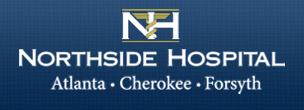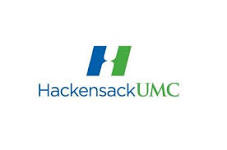Haploidentical Bone Marrow Transplantation in Sickle Cell Patients (BMT CTN 1507)
| Status: | Recruiting |
|---|---|
| Conditions: | Anemia |
| Therapuetic Areas: | Hematology |
| Healthy: | No |
| Age Range: | 5 - 45 |
| Updated: | 6/14/2018 |
| Start Date: | October 3, 2017 |
| End Date: | December 2024 |
| Contact: | Brianne Allison |
| Email: | ballison@emmes.com |
| Phone: | 301-251-1161 |
Reduced Intensity Conditioning for Haploidentical Bone Marrow Transplantation in Patients With Symptomatic Sickle Cell Disease
This is a Phase II, single arm, multi-center trial, designed to estimate the efficacy and
toxicity of haploidentical bone marrow transplantation (BMT) in patients with sickle cell
disease (SCD). Based on their age and entry criteria patients are stratified into two groups:
(1) children with SCD with strokes; and (2) adults with severe SCD.
toxicity of haploidentical bone marrow transplantation (BMT) in patients with sickle cell
disease (SCD). Based on their age and entry criteria patients are stratified into two groups:
(1) children with SCD with strokes; and (2) adults with severe SCD.
This study is designed as a Phase II multi-center trial to determine the feasibility of
achieving a high rate of event-free survival (EFS) at 2 years post transplant using
pre-conditioning hydroxyurea (HU) with a conditioning regimen that consists of a combination
of Thymoglobulin/Cyclophosphamide/Fludarabine/Thiotepa with post-grafting high-dose
cyclophosphamide in patients with severe SCD who have HLA-haploidentical donors. EFS is
defined as survival without a qualifying event. This is a single arm study in which
participants will be enrolled into one of two strata. The first stratum will be restricted to
children who have stroke and 40 children will be enrolled in this stratum. The second stratum
will consist of adult patients with severe sickle cell disease and 40 participants will be
enrolled in this stratum.
achieving a high rate of event-free survival (EFS) at 2 years post transplant using
pre-conditioning hydroxyurea (HU) with a conditioning regimen that consists of a combination
of Thymoglobulin/Cyclophosphamide/Fludarabine/Thiotepa with post-grafting high-dose
cyclophosphamide in patients with severe SCD who have HLA-haploidentical donors. EFS is
defined as survival without a qualifying event. This is a single arm study in which
participants will be enrolled into one of two strata. The first stratum will be restricted to
children who have stroke and 40 children will be enrolled in this stratum. The second stratum
will consist of adult patients with severe sickle cell disease and 40 participants will be
enrolled in this stratum.
Inclusion Criteria:
Adequate physical function as measured by all of the following:
1. A Karnofsky/Lansky performance score of ≥ 60.
2. Cardiac function: Left ventricular ejection fraction (LVEF) > 40%; or LV shortening
fraction > 26% by cardiac echocardiogram or by Multi Gated Acquisition Scan (MUGA)
scan.
3. Pulmonary function: Pulse oximetry with a baseline O2 saturation of ≥ 85% and
Diffusing capacity of the lung for carbon monoxide (DLCO) > 40% (corrected for
hemoglobin).
4. Renal function: Serum creatinine ≤ 1.5 x upper limit of normal for age and estimated
or measured creatinine clearance ≥ 70 mL/min/1.73 m²
5. Hepatic function:
1. Serum conjugated (direct) bilirubin < 2x upper limit of normal for age as per
local laboratory. Participants with hyperbilirubinemia as the result of
hyperhemolysis, or a severe drop in hemoglobin post blood transfusion, are not
excluded.
2. Alanine aminotransferase (ALT) and aspartate aminotransferase (AST) < 5x upper
limit of normal as per local laboratory.
6. Liver MRI using a validated methodology per institutional preference (T2* or R2* or by
ferriscan [R2 MRI]) for estimation of hepatic iron content is required for
participants who are currently receiving ≥8 packed red blood cell transfusions per
year for ≥1 year or have received ≥20 packed red blood cell transfusions (lifetime
cumulative). Participants who have hepatic iron content ≥ 10 mg Fe/g liver dry weight
by liver MRI must have a Gastroenterology/hepatology consultation with liver biopsy
and histological examination including documentation of the absence of cirrhosis,
bridging fibrosis, and active hepatitis.
7. Participants must be HLA typed at high resolution using DNA based typing at HLA-A, -B,
-C, DRB1, and have available:
An HLA haploidentical first degree relative donor (parents, siblings or half siblings,
or children) with 2, 3, or 4 (out of 8) HLA-mismatches who is willing and able to
donate bone marrow. A unidirectional mismatch in either the graft versus host or host
versus graft direction is considered a mismatch. The donor and recipient must be HLA
identical for at least one antigen (using high resolution DNA based typing) at the
following genetic loci: HLA-A, HLA-B, HLA-C, and HLA-DRB1. Fulfillment of this
criterion shall be considered sufficient evidence that the donor and recipient share
one HLA haplotype, and typing of additional family members is not required.
Confirmatory donor HLA typing must be completed < 100 days prior to Segment A
enrollment
8. Umbilical cord blood or peripheral blood stem cell donors will not be accepted.
Inclusion Criteria for Stratum 1: Children Ages 5.00 - 14.99 years of age at enrollment
1. Age 5.00 - 14.99 years at Segment A enrollment
2. Participants (Hb SS or Sß° Thalassemia) with overt stroke ischemia based on
neuroimaging, clinical evidence of permanent neurological injury lasting for 24 hours,
or both.
3. A neurological event resulting in focal neurologic deficits that lasted ≥ 24 hours
(classical clinical definition of stroke, not requiring imaging studies of the brain)
OR a focal neurological event resulting in abnormalities on T2-weighted or FLAIR
images using a MRI scan, indicative of an acute infarct, with no other reasonable
medical explanation (definition of a stroke supported with MRI imaging scans of the
brain), OR both.
4. Lack of clinical or radiologic evidence of a recent cerebral infarct by cerebral
MRI/MRA within 30 days prior to enrollment. Participants with clinical or radiologic
evidence or a recent cerebral infarct will be deferred for ≥ 6 months with repeat
cerebral MRI/MRA to ensure stabilization of the neurologic event prior to proceeding
to transplantation.
Inclusion Criteria for Stratum 2: Adults Ages 15.00 - 45.99 at enrollment
Participants with sickle cell anemia (Hb SS or Sß° Thalassemia) who are 15.00 - 45.99 years
of age at enrollment AND who have one or more of the following:
1. Age 15.00 - 45.99 years at Segment A enrollment
2. Participants with sickle cell anemia (Hb SS or Sß° Thalassemia) who have one or more
of the following:
1. A neurological event resulting in focal neurologic deficits that lasted ≥ 24
hours (classical clinical definition of stroke, not requiring imaging studies of
the brain) OR a focal neurological event resulting in abnormalities on
T2-weighted or FLAIR images using a MRI scan, indicative of an acute infarct,
with no other reasonable medical explanation (definition of a stroke supported
with MRI imaging scans of the brain), OR both.
2. History of two or more episodes of acute chest syndrome (ACS) in the 2-year
period preceding enrollment despite the institution of supportive care measures
(i.e. asthma therapy and/or hydroxyurea);
3. History of three or more severe vaso-occlusive pain crises per year in the 2-year
period preceding enrollment despite the institution of supportive care measures
(i.e. a pain management plan and/or treatment with hydroxyurea); painful episodes
related to priapism, osteonecrosis or any sickle-related complication are
acceptable;
4. Administration of regular RBC transfusion therapy, defined as receiving ≥8 packed
red blood cell transfusions per year for ≥1 year in the 12 months before
enrollment to prevent vaso-occlusive clinical complications (i.e. pain, stroke,
and acute chest syndrome);
5. An echocardiographic finding of tricuspid valve regurgitant jet velocity (TRJV) ≥
2.7 m/sec.
Exclusion Criteria:
1. Participants who have an HLA-matched sibling who is able and willing to donate bone
marrow. Patients with a HLA-matched unrelated donor are not excluded.
2. Uncontrolled bacterial, viral or fungal infection in the 6 weeks before enrollment
(currently taking medication with evidence of progression of clinical symptoms or
radiologic findings).
3. Evidence of HIV infection or known HIV positive serology.
4. Participants who have received a previous hematopoetic cell transplant (HCT).
5. Participants who have received a prior solid organ transplant
6. Participants who have participated in another clinical trial in which the patient
received an investigational or off-label use of a drug or device within 3 months of
enrollment.
7. Females who are pregnant or breastfeeding.
8. Participants with clinically significant, uncontrolled autoimmune disease, requiring
active medical management (immunosuppressive therapy or chemotherapy), which, in the
judgment of the local Principal Investigator, indicates that the patient could not
tolerate transplantation.
9. Females of child bearing potential (to include all female participants > 10 years of
age, unless postmenopausal for a minimum of 1 year before the time of consent or
surgically sterilized), who do not agree to practice two (2) effective methods of
contraception at the same time, or do not agree to practice true abstinence when this
is in line with the preferred and usual lifestyle of the subject, from the time of
signing of informed consent through 12 months post-transplant.
10. Males (even if surgical sterilized) who do not agree to practice effective barrier
contraception, or who do not agree to practice true abstinence from the time of
signing informed consent through 12 months post-transplant.
11. Presence of anti-donor specific HLA antibodies. HLA antibody presence and specificity
will be determined by solid phase immunoassays. An anti-donor specific HLA antibody
will be considered positive when the mean fluorescence intensity (MFI) is higher than
the cut-off defined by each institution. Recommended cut-off values are MFI >1000 for
donor specific antibody to HLA-A, -B, and DRB1 and MFI >2000 for HLA-C, DQB1 and DPB1.
This must be measured before the final donor selection, and < 100 days before
enrollment in Segment A (preferably < 30 days before Segment A enrollment). If MFI
>1000 for donor specific antibody to HLA-A, -B, DRB1 and/or MFI >2000 for HLA-C, DQB1
and DPB1, documentation must be submitted to the DCC coordinator for review and
approval by a Protocol Chair and/or Protocol Officer prior to enrollment
We found this trial at
10
sites
Click here to add this to my saved trials
University of Alabama at Birmingham The University of Alabama at Birmingham (UAB) traces its roots...
Click here to add this to my saved trials
1000 Johnson Ferry Rd NE
Atlanta, Georgia 30342
Atlanta, Georgia 30342
(404) 851-8000

Phone: 404-255-1930
Northside Hospital Northside Hospital-Atlanta (in Sandy Springs) opened in 1970. The original facility had 250...
Click here to add this to my saved trials
Click here to add this to my saved trials
Hackensack University Medical Center Hackensack University Medical Center, part of the Hackensack University Health Network,...
Click here to add this to my saved trials
Click here to add this to my saved trials
Click here to add this to my saved trials
Click here to add this to my saved trials
Click here to add this to my saved trials
Click here to add this to my saved trials

